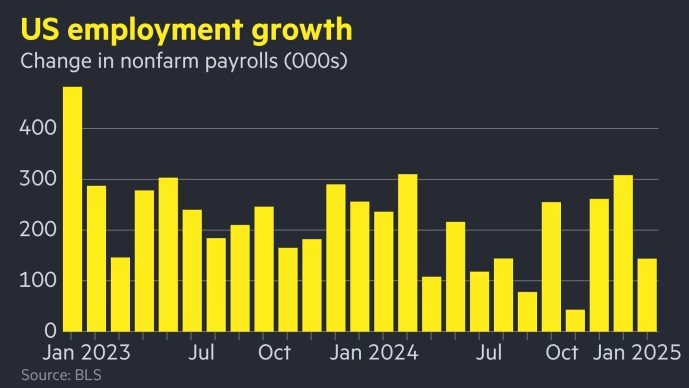This article picked by a teacher with suggested questions is part of the Financial Times free schools access programme. Details/registration here.
Read our full range of US High School economics picks here.
The US labuor market is constantly changing, with job growth and unemployment rates influencing businesses, workers and the overall economy. While the official unemployment rate provides a useful snapshot, it does not capture all jobless individuals, making it important to analyze broader employment trends. By examining job growth across different industries and understanding how businesses and individuals respond to labor market shifts, we can better grasp the real impact of employment data.
Essential Question: How is the unemployment rate calculated, and what are its limitations in measuring the true state of the labor market?
Part One: Watch this video, Defining the Unemployment Rate (3:57) and answer the following questions.
-
The video shows that the U.S. unemployment rate has fluctuated over time, averaging about 6 per cent. What economic factors might contribute to these fluctuations?
-
The video states that the unemployment rate is never zero, even during economic booms. Why do you think some level of unemployment always exists, even when the economy is growing?
-
How is the unemployment rate calculated?
-
Give three examples of people who would be counted as unemployed in the official unemployment data?
-
Why are retirees, prisoners, and children not included in the unemployment rate?
-
Why doesn’t the unemployment rate include everyone who doesn’t have a job?
Part Two: Reading Questions:
Read the FT article: US economy created 143,000 jobs in January and then answer the questions below.
-
How did the unemployment rate change in January 2025, and why is this significant for economic policy?
-
Why might the actual jobless rate be higher than the official unemployment rate reported in the article?
-
What trends do you observe in the chart on US employment growth?
-
Choose three different industries from the interactive chart “US Jobs Growth by Sector” and compare their job growth. What might this tell us about the economy?
Joel Miller and James Redelsheimer, Foundation for Economic Education.
Click here for FEE FT Classroom Edition with classroom-ready presentations and suggested answers for teachers.





